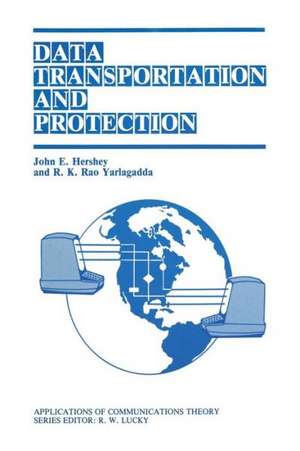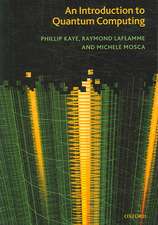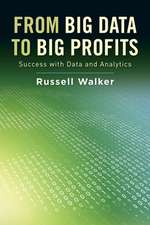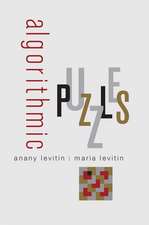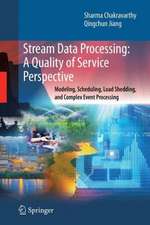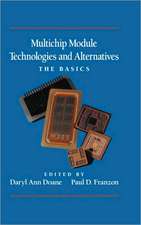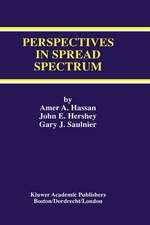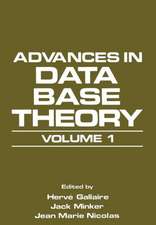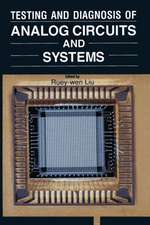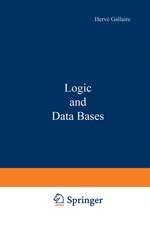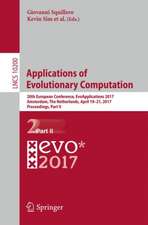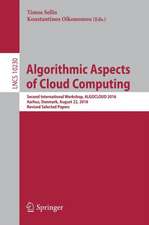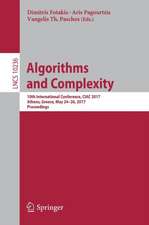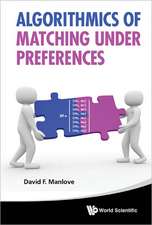Data Transportation and Protection: Applications of Communications Theory
Autor John E. Hershey, Rao K. Yarlagaddaen Limba Engleză Paperback – 28 sep 2011
Din seria Applications of Communications Theory
- 15%
 Preț: 645.60 lei
Preț: 645.60 lei - 15%
 Preț: 641.71 lei
Preț: 641.71 lei - 18%
 Preț: 956.18 lei
Preț: 956.18 lei - 18%
 Preț: 2105.61 lei
Preț: 2105.61 lei - 18%
 Preț: 1243.92 lei
Preț: 1243.92 lei -
 Preț: 393.74 lei
Preț: 393.74 lei - 18%
 Preț: 2487.11 lei
Preț: 2487.11 lei - 18%
 Preț: 953.35 lei
Preț: 953.35 lei - 15%
 Preț: 650.86 lei
Preț: 650.86 lei - 18%
 Preț: 1228.96 lei
Preț: 1228.96 lei - 15%
 Preț: 649.39 lei
Preț: 649.39 lei - 18%
 Preț: 1392.95 lei
Preț: 1392.95 lei - 18%
 Preț: 1243.92 lei
Preț: 1243.92 lei - 18%
 Preț: 963.77 lei
Preț: 963.77 lei - 18%
 Preț: 957.75 lei
Preț: 957.75 lei - 20%
 Preț: 337.32 lei
Preț: 337.32 lei -
 Preț: 401.79 lei
Preț: 401.79 lei - 20%
 Preț: 346.10 lei
Preț: 346.10 lei -
 Preț: 388.13 lei
Preț: 388.13 lei - 20%
 Preț: 339.99 lei
Preț: 339.99 lei - 18%
 Preț: 962.49 lei
Preț: 962.49 lei - 18%
 Preț: 958.56 lei
Preț: 958.56 lei - 18%
 Preț: 1394.52 lei
Preț: 1394.52 lei -
 Preț: 410.07 lei
Preț: 410.07 lei
Preț: 341.81 lei
Preț vechi: 427.26 lei
-20% Nou
Puncte Express: 513
Preț estimativ în valută:
65.41€ • 71.03$ • 54.95£
65.41€ • 71.03$ • 54.95£
Carte tipărită la comandă
Livrare economică 22 aprilie-06 mai
Preluare comenzi: 021 569.72.76
Specificații
ISBN-13: 9781461292906
ISBN-10: 1461292905
Pagini: 512
Ilustrații: 508 p.
Dimensiuni: 152 x 229 x 27 mm
Greutate: 0.68 kg
Ediția:Softcover reprint of the original 1st ed. 1986
Editura: Springer Us
Colecția Springer
Seria Applications of Communications Theory
Locul publicării:New York, NY, United States
ISBN-10: 1461292905
Pagini: 512
Ilustrații: 508 p.
Dimensiuni: 152 x 229 x 27 mm
Greutate: 0.68 kg
Ediția:Softcover reprint of the original 1st ed. 1986
Editura: Springer Us
Colecția Springer
Seria Applications of Communications Theory
Locul publicării:New York, NY, United States
Public țintă
ResearchCuprins
1. Data—Its Representation and Manipulation.- 1.1. Introduction.- 1.2. Number Systems.- 1.3. Negabinary Numbers.- 1.4. The Factorial Number System.- 1.5. The Gray Code.- 1.6. A Look at Boolean Functions.- References.- 2. Counting and Probability.- 2.1. Counting.- 2.2. Generating Functions.- 2.3. Permutations.- 2.4. Combinations.- 2.5. Recurrence Relations/Difference Equations.- 2.6. Probability.- 2.7. Generating Functions in Probability Theory.- 2.8. The Bernoulli Source.- 2.9. Some Important and Famous Problems.- 2.10. Random Mappings.- 2.11. Redundancy and the Perfect Voter.- 2.12. Bias.- 2.13. Maximum Likelihood Estimation.- References.- 3. The Natural Numbers and Their Primes.- 3.1. Introduction.- 3.2. Finding Primes: I.- 3.3. The Euclidean Algorithm.- 3.4. Congruences.- 3.5. Residue Sets.- 3.6. Reduced Residue Sets.- 3.7. The Euler-Fermat Theorem.- 3.8. Wilson’s Theorem.- 3.9. The Function ?.- 3.13.1. An Example of the Split-Search Algorithm.- 3.14. The Chinese Remainder Theorem.- 3.15. Finding Primes: II.- References.- 4. Basic Concepts in Matrix Theory.- 4.1. Introduction.- 4.2. Concept of a Field and a Group.- 4.3. Basic Definitions.- 4.4. Matrix Operations.- 4.5. Partitioned Matrices.- 4.6. Inverses of Matrices.- References.- 5. Matrix Equations and Transformations.- 5.1. Introduction.- 5.2. Linear Vector Spaces.- 5.3. Gram-Schmidt Process.- 5.4. Solutions of Equations.- 5.5. Solutions of Overdetermined Systems.- 5.6. Normal Matrices.- 5.7. Discrete Transforms.- References.- 6. Matrix Representations.- 6.1. Introduction.- 6.2. Eigenvalue Problem.- 6.3. Diagonal Representation of Normal Matrices.- 6.4. Representations of Nondiagonable Matrices.- 6.5. Circulant Matrix and Its Eigenvectors.- 6.6. Simple Functions of Matrices.- 6.7. Singular ValueDecomposition.- 6.8. Characteristic Polynomials.- 6.9. Minimal Polynomial.- 6.10. Powers of Some Special Matrices.- 6.11. Matrix Norms.- References.- 7. Applications of Matrices to Discrete Data System Analysis.- 7.1. Introduction.- 7.2. Discrete Systems.- 7.3. Discrete Convolution.- 7.4. Discrete Deconvolution.- 7.5. Linear Constant-Coefficient Difference Equations.- 7.6. Matrix Representation of an Nth-Order Constant-Coefficient Difference Equation.- 7.7. Solutions of an Nth-Order Difference Equation Using a State Model Representation.- 7.8. Transfer Functions: An Introduction to Z Transforms.- 7.9. Observability Problem.- References.- 8. Random and Pseudorandom Sequences.- 8.1. Introduction.- 8.2. Markov Chains.- 8.3. m-Sequences (Hershey, 1982).- References.- 9. Source Encoding.- 9.1. Introduction.- 9.2. Generalized Bernoulli Source.- 9.3. Unique Decodability.- 9.4. Synchronizable Codes.- 9.5. Information Content of a Bernoulli Source.- 9.6. The Huffman Code.- 9.6.1. Connell’s Method of Coding.- 9.7. Source Extension and Its Coding.- 9.8. Run Length Encoding.- 9.9. Encoding to a Fidelity Criterion.- References.- 10. Information Protection.- 10.1. Classical Cryptography.- 10.2. Public Key Cryptography.- 10.3. Secret Sharing Systems.- References.- 11. Synchronization.- 11.1. Introduction.- 11.2. Epoch Synchronization.- 11.3. Phase Synchronization.- References.- 12. The Channel and Error Control.- 12.1. Introduction.- 12.2. A Channel Model.- 12.3. The Simplest Hamming Code.- 12.4. The Hamming Code—Another Look.- 12.5. The z-Channel and a Curious Result.- 12.6. The Data Frame Concept.- 12.7. A Curious Problem.- 12.8. Estimation of Channel Parameters.- References.- 13. Space Division Connecting Networks.- 13.1. Introduction.- 13.2. Complete Permutation Networks.-13.3. The Clos Network.- 13.4. A Rearrangeable Connecting Network and Paull’s Algorithm.- 13.5. The Perfect Shuffle and the Omega Network.- 13.6. The Beneš-Waksman Permutation Network.- 13.7. The Perfect Shuffle Network Revisited.- References.- 14. Network Reliability and Survivability.- References.
